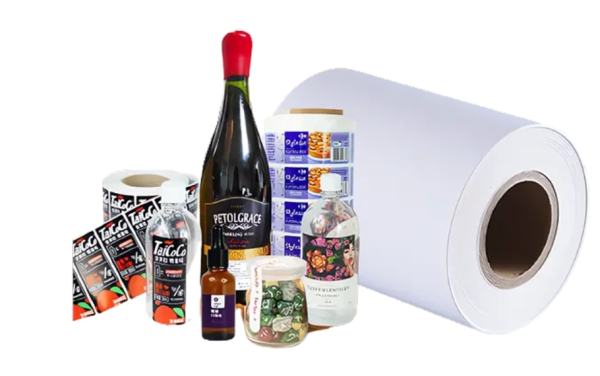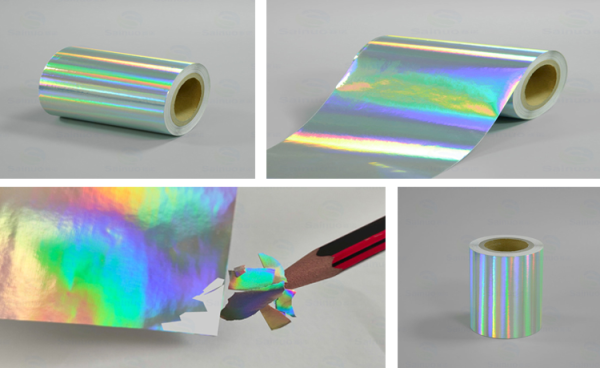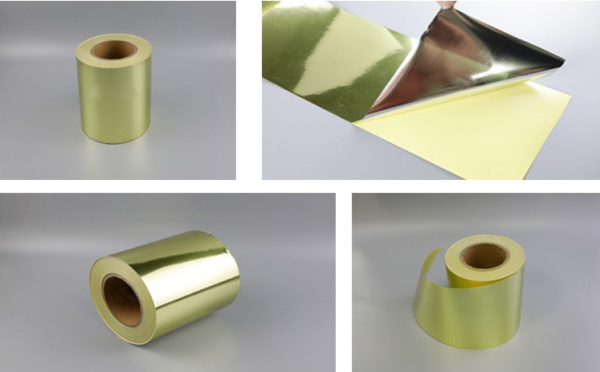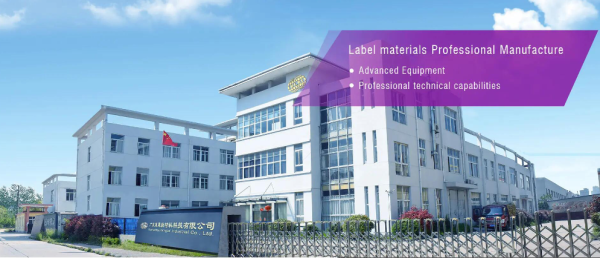Label materials are an important part of product branding and packaging. They are a means of displaying basic information about a product while also conveying the brand’s identity and message to consumers. Traditionally, label materials such as paper and plastic have been widely used for this purpose. However, with advances in technology and materials science, innovative label materials are now available that offer a range of benefits to brands and packaging.
1. Overview of traditional label materials
Traditional label materials such as paper and plastic have been the preferred choice for many years. Paper labels are cost-effective and can be easily printed with a variety of designs and messages. Plastic labels, on the other hand, are durable and resistant to moisture and other environmental factors. While these materials serve their purpose well, they may not always deliver the ideal level of innovation required by modern branding and packaging.
2. Introduction to innovative label materials
Innovative label materials cover a variety of options, including sustainable materials, specialty coatings and digital printing technologies. For example, many companies are now turning to sustainable label materials made from recycled or biodegradable substrates to meet consumer demand for environmentally friendly packaging. Specialty coatings such as soft-touch or high-gloss finishes can enhance the visual and tactile appeal of labels, making products stand out on the shelf. Additionally, digital printing technology allows for greater customization and variability in label design, allowing brands to create unique and eye-catching labels.
3. Benefits of using innovative label materials for branding
There are several benefits to using innovative label materials for branding. First, these materials provide a way to differentiate a product from competitors and capture consumers’ attention through eye-catching designs and finishes. They also offer opportunities to align with sustainability goals, attracting environmentally conscious consumers. In addition, innovative label materials can enhance overall brand recognition and convey a sense of quality and innovation.

As the demand for sustainable and interactive packaging continues to grow, the need for innovative label materials is becoming increasingly important. From eco-friendly options to interactive and engaging labels, the market for innovative label materials is expanding rapidly.
A. Sustainable and environmentally friendly label materials
The global push for sustainability has led to the development of label materials that are not only environmentally friendly but also high-performance. As an industry leader, Donglai is revolutionizing the packaging industry by providing a range of sustainable and environmentally friendly label materials.
1. Biodegradable and compostable labels
With growing concerns over plastic waste and its impact on the environment, biodegradable and compostable labels have become popular options for brands looking to reduce their environmental footprint. These labels are made from materials that break down easily in the environment, reducing the amount of waste that ends up in landfills. Donglai‘s biodegradable labels are not only environmentally friendly, but also offer excellent printability, adhesion and durability, making them the best choice for brands looking to have a positive impact on the environment.
2. Recycled paper and materials made from renewable resources
Labels made from recycled paper and renewable resource materials are another popular option for brands looking to step up their sustainability efforts. Not only do these labels reduce the need for new raw materials, they also help minimize the environmental impact of packaging production. Donglai offers a variety of recycled label materials made from post-consumer waste, agricultural residues and other renewable resources, making it ideal for brands looking to align with sustainability initiatives.
B. Interactive and engaging label materials
In today’s digital age, brands are looking for ways to engage consumers and create memorable experiences through packaging. Innovative label materials that offer interactivity and engagement are becoming increasingly popular as brands look to stand out on shelf and leave a lasting impression.
1. Augmented Reality Tags
Augmented reality (AR) labels are cutting-edge technology that allow consumers to interact with packaging using smartphones or other devices. Donglai‘s AR tags provide a unique immersive experience, allowing consumers to access more content, games or product information by scanning the tags with their mobile devices. This level of interactivity not only enhances the consumer experience, but also provides brands with valuable data and insights into consumer behavior.
2. Interactive QR code and NFC technology
QR codes and near field communication (NFC) technology are also transforming label materials, giving brands a way to connect with consumers in innovative ways. Donglai’s interactive tags use QR codes and NFC technology, which can be used to provide additional product information, discounts or exclusive content, creating a more engaging and personalized experience for consumers.
C. Functional and informational label materials
In addition to sustainability and interactivity, label materials are constantly evolving to provide functional and informational features that enhance the overall packaging experience.
1. Smart labels and smart packaging
Smart labels and smart packaging are revolutionizing the way brands and consumers interact with products. These tags are embedded with sensors and other technologies that provide real-time information about the product, such as freshness, temperature and authenticity. Donglai’s smart labels provide brands with a way to ensure product integrity and provide valuable information to consumers, ultimately building trust and loyalty.
2. Temperature-sensitive and tamper-evident labels
Labels with temperature-sensitive and tamper-resistant features are also growing in popularity, especially in industries where product safety and authenticity are critical. Donglai’s temperature-sensitive labels change color as the temperature changes, clearly indicating whether the product has been exposed to adverse conditions. Tamper-evident labels, on the other hand, are designed to show evidence of tampering, giving consumers peace of mind and ensuring product integrity.

The food industry continues to evolve, with consumers becoming increasingly aware of the products they buy, the ingredients they use and their overall impact on the environment. Therefore, innovative label materials play a key role in helping food manufacturers meet these changing needs. There are several key advantages to using innovative label materials in the food industry, including differentiation and competitive advantage, communicating brand values and stories, and meeting regulatory and consumer demands for transparency and sustainability.
A. Differentiation and competitive advantage
In a saturated market, where numerous products compete for consumers’ attention, differentiation is key. Innovative label materials offer food manufacturers the opportunity to stand out on the shelf and capture the attention of their target audience. Whether using high-quality, textured materials, incorporating unique finishes, or utilizing custom shapes and sizes, label materials play an important role in creating visually appealing and unique products.
Research shows that consumers are more likely to purchase products that stand out on the shelf, with 64% of consumers saying they try new products simply because the packaging catches their eye (Mintel, 2020). By investing in innovative label materials, food manufacturers can gain a competitive advantage and increase product visibility, ultimately driving sales and brand recognition.
B. Communicate brand values and stories
In today’s socially conscious consumer landscape, consumers are increasingly interested in the value and stories behind the products they purchase. Innovative label materials provide food manufacturers with an excellent platform to effectively communicate their brand values, sustainability efforts and ethical sourcing practices.
For example, using label materials made from recycled or biodegradable materials is not only in line with environmentally conscious consumers, but also serves as a visual representation of a brand’s commitment to sustainability. Additionally, using storytelling elements on labels, such as QR codes tied to supplier stories or product origins, can engage and educate consumers, creating a deeper connection with the brand.
C. Meet regulatory and consumer demands for transparency and sustainability
The food industry is highly regulated and has strict requirements for product labeling. Innovative label materials can play an important role in helping food manufacturers comply with these regulations, while meeting consumer demands for transparency and sustainability.
For example, label materials that are resistant to moisture, temperature fluctuations and other environmental factors are critical to maintaining the integrity of product information throughout the supply chain. Additionally, the use of labeling materials that provide clear, concise information about product ingredients, nutritional values, and allergens is critical to meeting regulatory requirements and providing transparency to consumers.
The use of sustainable label materials is also in line with consumer expectations, as more than 70% of consumers prefer to purchase products from companies that care about environmental impact (Nielsen, 2019). By choosing label materials that are recyclable or made from renewable resources, food manufacturers can demonstrate their commitment to sustainability and attract environmentally conscious consumers.

The choice of label materials ranges from paper and plastic to more specialized materials such as bioplastics, compostable films and recycled materials. When selecting appropriate labeling materials for food products, there are many factors to consider, including the product’s packaging design, intended use, environmental conditions and regulatory requirements.
Paper labels are a popular choice for many food products due to their versatility, cost-effectiveness, and ability to be easily recycled. However, they may not be suitable for products that require moisture protection or extended shelf life. In this case, plastic labels, including polypropylene and vinyl, are preferred due to their durability and water-resistant properties.
In recent years, there has been growing interest in sustainable label materials, such as bioplastics and compostable films, which offer environmentally friendly alternatives to traditional label materials. Bioplastics are derived from renewable resources such as corn or sugar cane and are biodegradable, making them a top choice for brands looking to reduce their environmental impact.
When selecting label materials, it is important to work with a reputable label material supplier who can provide guidance on the best materials to meet specific product requirements. Label material suppliers play a vital role in ensuring food manufacturers receive high-quality, compliant and innovative label materials that meet their unique needs.
Label Material Suppliers
Choosing the right label material supplier is critical for food manufacturers as it directly affects label material quality, compliance and innovation. When selecting a label material supplier, several factors must be considered, including their industry expertise, product range, commitment to sustainability, and customer service.
Industry expertise: A reputable label material supplier should have extensive industry expertise and a deep understanding of the unique challenges and requirements of the food industry. This includes knowledge of regulatory standards, food packaging trends, and best practices in label material selection.
Product range: Label material suppliers should offer a variety of label materials to meet various product packaging needs, including moisture resistance, sustainability and customization options. The comprehensive product range ensures food manufacturers can find label materials suitable for their specific requirements.
Commitment to Sustainability: As sustainability remains a top priority for consumers and the industry, it is critical to select a label material supplier with a strong commitment to sustainability. This includes providing environmentally friendly label materials, utilizing environmentally responsible production processes and providing transparency about sustainability efforts.
Customer Service: A reliable label material supplier should provide excellent customer service, including personalized consultation, prompt response, and a commitment to delivering high-quality products on time. Strong customer service ensures food manufacturers receive the support they need to effectively select and use innovative label materials.

In today’s competitive market, it is important for companies to stay ahead of the curve by using innovative label materials that not only meet regulatory compliance and labeling requirements, but are also compatible with a variety of packaging materials and surfaces. However, the road to adoption and implementation of new label materials is not without challenges and potential pitfalls.
A. Regulatory Compliance and Labeling Requirements
One of the biggest challenges with using innovative label materials is ensuring compliance with ever-changing regulations and labeling requirements. Since different countries and regions have their own set of rules and standards, keeping up with the latest regulatory changes can be a daunting task for businesses. Failure to comply with these regulations can result in significant fines and damage to the company’s reputation.
To overcome this challenge, businesses need to invest in thorough research and stay informed about the latest regulatory updates. This may require working closely with regulators and seeking expert advice to ensure their labeling materials meet all necessary compliance requirements. Additionally, working with a vendor that specializes in regulatory compliance can help businesses navigate the complex landscape of labeling regulations.
B. Compatibility with various packaging materials and surfaces
Another challenge companies face when using innovative label materials is ensuring compatibility with a variety of packaging materials and surfaces. Different packaging materials such as glass, plastic and metal, as well as uneven or irregular surfaces, can pose challenges to traditional label materials. Using the wrong label material can lead to adhesion issues, peeling and poor overall label performance, negatively impacting the product’s shelf appeal and brand image.
To overcome this challenge, companies should thoroughly test different label materials on various packaging substrates to determine their compatibility. Working closely with packaging suppliers and materials experts can also provide valuable insights into selecting the right label material for a specific packaging application. Additionally, investing in innovative labeling technologies such as pressure-sensitive labels or shrink sleeve labels can provide enhanced adhesion and flexibility, ensuring compatibility with a variety of packaging materials and surfaces.
C. Consumer Education and Adoption of New Labeling Materials
Consumer education and the adoption of new labeling materials may also present potential pitfalls for companies. When launching innovative label materials, companies need to educate consumers on the benefits and advantages of these new materials. However, changing consumer behavior and preferences can be a slow process, and there is a risk of resistance or skepticism toward new label materials.
To overcome this challenge, companies should prioritize consumer education and transparency in their communications efforts. Providing clear and concise information about the sustainability, durability and safety of new label materials can help build consumer trust and confidence. Additionally, using social media, package design and in-store marketing to highlight the unique features of innovative label materials can spark consumer curiosity and interest, leading to greater adoption over time.

As technology continues to advance rapidly, the label materials industry continues to evolve to meet the growing needs of consumers and businesses. Emerging technologies for label materials are driving the development of new innovative products that are changing the way we think about labels. Additionally, the potential impact of sustainability and the circular economy on label materials is reshaping the industry, paving the way for greener solutions. Forecasting the adoption of innovative label materials in industries such as food is critical for companies to stay ahead of the curve and stay competitive in the market.
Emerging technologies in label materials are revolutionizing the way labels are produced and used. With the rise of digital printing technology, label materials have become more versatile and customizable, allowing for greater design flexibility. This technology enables businesses to create labels that are not only beautiful, but also informative and useful. Nanotechnology also plays an important role in the development of label materials, providing enhanced durability and security features. These advancements in label material technology are driving the industry forward and opening up new possibilities for businesses and consumers.
The potential impact of sustainable development and circular economy on label materials has received increasing attention from the industry. As businesses and consumers become more environmentally conscious, there is a growing need for sustainable label materials that minimize environmental impact. This has led to the development of biodegradable and compostable label materials as well as materials derived from renewable resources such as plant-based plastics. The circular economy also impacts how label materials are produced and disposed of, with a focus on reducing waste and maximizing resource use. This shift toward sustainability is not only good for the environment, but also for businesses seeking to align with consumer values and reduce their carbon footprint.
Forecasting the adoption of innovative label materials is critical for businesses, especially in the food industry where labels play a vital role in communicating product information and ensuring safety and quality. With the rise of digital printing and customizable label materials, businesses can expect to see a greater variety of labels to meet specific consumer preferences and market trends. Additionally, demand for sustainable label materials is expected to grow as businesses and consumers prioritize environmental responsibility. This prediction is supported by the growing number of companies adopting sustainable practices and seeking environmentally friendly labeling material solutions.
In order to understand future trends and predictions for label materials, it is important to conduct in-depth research and collect relevant statistics, quotes, and examples from reliable sources. According to a report by Smithers, the global label materials market is expected to reach US$44.8 billion by 2024, driven by technological advancements and growing application opportunities across industries. This demonstrates the market shift towards more advanced and sustainable label materials. Additionally, quotes from industry experts underscore the growing importance of sustainability in label material trends, with many businesses emphasizing the need for environmentally friendly solutions to meet consumer demands.

Over the past three decades, Donglai has achieved remarkable progress and emerged as a leader in the industry. The company’s extensive product portfolio comprises four series of self-adhesive label materials and daily adhesive products, encompassing more than 200 diverse varieties.
With an annual production and sales volume exceeding 80,000 tons, the company has consistently demonstrated its capability to meet the market demands on a large scale.
Original Source: https://www.dlailabel.com/news/how-can-branding-be-enhanced-with-innovative-labels/
Media Contact
Company Name: Guangdong Donglai Industrial Co., Ltd.
Email: Send Email
Country: China
Website: https://www.dlailabel.com/
